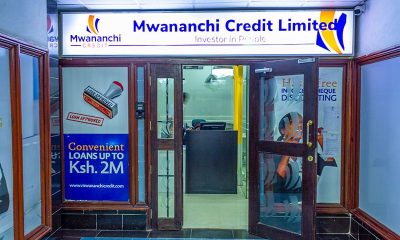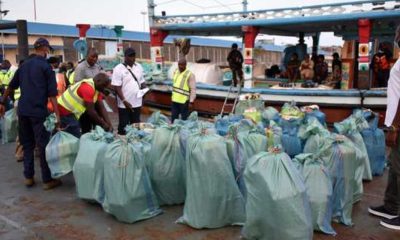Africa
AfCFTA: A Lesson To Learn From ASEAN FTA

In November 1992, 6 countries (Brunei, Singapore, Indonesia, Malaysia, the Philippines, and Thailand) at that time as members of the Association of South East Asian Nations (ASEAN) met in Singapore and set a resolution for the establishment of a free trade area commonly known as ASEAN Free Trade Agreement (AFTA). It should be noted that the Association (ASEAN) was founded in 1967 where its main goal was political and economic cooperation, but due to the instability of the political and security situation in many of the member states, the cooperation resolution failed to be fulfilled in time concerned and remained as a political community that had little impact on the economy. The countries of Laos, Cambodia, Vietnam, and Myanmar joined later.
The agreement (AFTA) aimed to facilitate production and trade in Small and Medium-sized Enterprises (SMEs), it was expected that it will bring a boost from the grassroots level (farmers, traders, and factory owners) thus the intended economic growth would reflect these communities directly. To begin with, the Common Effective Preferential Tariff (CEPT) Scheme was established to reduce tariffs on products in phases for member countries to 0-5% till the year 2003. The issue of eliminating tariffs stepwise was done purposely to not affect the economy of these countries, considering the economic contribution of products (that should be duty tax-free) to the economy of those countries. For example, Cambodia should have reached a 0-5% tariff charge in 2010, Laos, and Myanmar in 2008.
In 2010, CEPT was improved and a new advanced agreement was signed that would speed up the performance of this economic integration as well as provide an open room for the inclusion of other countries as peripheral commercial partners. This agreement was ASEAN Trade in Goods Agreement (ATiGA).
What can AfFCTA learn?
The publication Taking Advantage of ASEAN’s Free Trade Agreements: A guide for Small and Medium-Sized Enterprises, has explained in detail that 90% of all businesses in the ASEAN region are categorized into small and medium enterprises (SMEs) and that hitting the target of USD 10 Trillion by 2030 and making it the fourth largest economic zone in the world, the SMEs must be emphasized.
The implementation guide of ATiGA led to the establishment of Industrial Cooperation between the ASEAN partner countries (ASEAN Industrial Cooperation Scheme) where the member countries, they would be allowed to join and invest as Joint Ventures projects in industries, and their products will be qualified to be charged 0-5% tariff rate but importantly the raw materials must originate from among the AFTA member states. This step led to the existence of 98 factories built by Joint Ventures projects and it had led to more than 150 factories applications by July 2002 and led to the growth of industries, especially in the sector of Technology and communication, electricity and agriculture mostly in food crops.
AFTA has also developed a mechanism to involve other countries from outside the geography of South East Asia in investment and trade. For example, in July 2005, an Agreement was signed between the Chinese Government and AFTA, where 90% of the products involved in the bilateral market will be reduced or exempted from customs duties. This exercise will occur after the analysis of “Important Products” and “Not Very Important Products”. Thus, the important ones will be given priority for tax exemption. This process has been seen to benefit both parties considering the size of the market in China and China’s production capacity.
This step has made it possible to select products that AFTA member countries may not be able to produce on time while the demand for the product is high in their countries, so getting the product without customs duty helps to reduce the cost of importing the product at high costs. This cooperation process with countries outside of AFTA has also involved countries such as Japan (ASEA-Japan Comprehensive Economic Partnership (AJCEP), South Korea (AKFTA), Australia and New Zealand Together (AANZFTA), and India (AIFTA).
The global economic recession of 2008, significantly affected the ASEAN countries by weakening commercial cooperation and investment. The crisis made AFTA members state along with China, South Korea, and Japan (ASEAN+3) sign an agreement known as the Chiang Mai Initiative (CMI) in 2000 which was an improvement of the previous agreement known as the ASEAN Swap Agreement (ASA) which aimed to facilitate member states going during the recession. ASEAN+3 came up with a program that enabled the registration of bonds that will be used to improve access and market infrastructure. The plan was known as the Asia Bond Market Initiative (ABMI) and it was signed in 2003.
This step enables these countries to be sure of the improvement and expansion of markets according to needs, especially in the area of production and markets whenever there will be a recession or price fluctuation of the products.
It is estimated that the implementation of these strategies will enable 65% of AFTA member states of population approximately 600 million to be categorized as a middle-class economy. The boost will arise from the stimulation of science and technology from China and Japan, while Singapore is in finance and Vietnam, Indonesia, and Malaysia are in the industrial sector.
According to Kenya’s policy guide on the AfCFTA agreement, The Kenya AfCFTA Implementation Strategy 2022-2027, it has been explained in detail that the production of goods that will be sent to AfCFTA, should have a prior market inside the country, so AfCFTA member countries should also consider it that on the development of the market because that step will be the catalyst of the economic chain that will affect all groups, especially in the area of SMEs.
About Author
Ezra Nnko is a Geopolitical and International Policy Analyst based in Dar es salaam, Tanzania. He is available through [email protected] and through Phone Number:
+255 765 571917 (Call + WhatsApp)
+255 784 527018 (Call)
Kenya Insights allows guest blogging, if you want to be published on Kenya’s most authoritative and accurate blog, have an expose, news TIPS, story angles, human interest stories, drop us an email on [email protected] or via Telegram
-

 Investigations2 weeks ago
Investigations2 weeks agoHow Land Grabbing Cartels Have Captured Ardhi House
-

 Business2 weeks ago
Business2 weeks agoPanic As Payless Africa Freezes With Billions of Customers Cash After Costly Jambopay Blunder
-

 News2 weeks ago
News2 weeks agoSCANDAL: Cocoa Luxury Resort Manager Returns to Post After Alleged Sh28 Million Bribe Clears Sexual Harassment and Racism Claims
-

 Investigations1 week ago
Investigations1 week agoHow SportPesa Outfoxed Paul Ndung’u Of His Stakes With A Wrong Address Letter
-

 News2 days ago
News2 days agoTemporary Reprieve As Mohamed Jaffer Wins Mombasa Land Compensation Despite Losing LPG Monopoly and Bitter Fallout With Johos
-

 Business2 weeks ago
Business2 weeks agoMwananchi Credit Faces Massive Lawsuits After Court Flags Predatory Lending That Left Customers’ Loans Ballooning
-

 Investigations2 weeks ago
Investigations2 weeks agoHow Arrest of a Soldier’s Spouse Dragged KDF Into Alleged Theft of Meth Haul in Mombasa
-

 News1 week ago
News1 week agoRentokil Boss Fraser Branch in Highway Smash as DUI and Racism Claims Surface


















